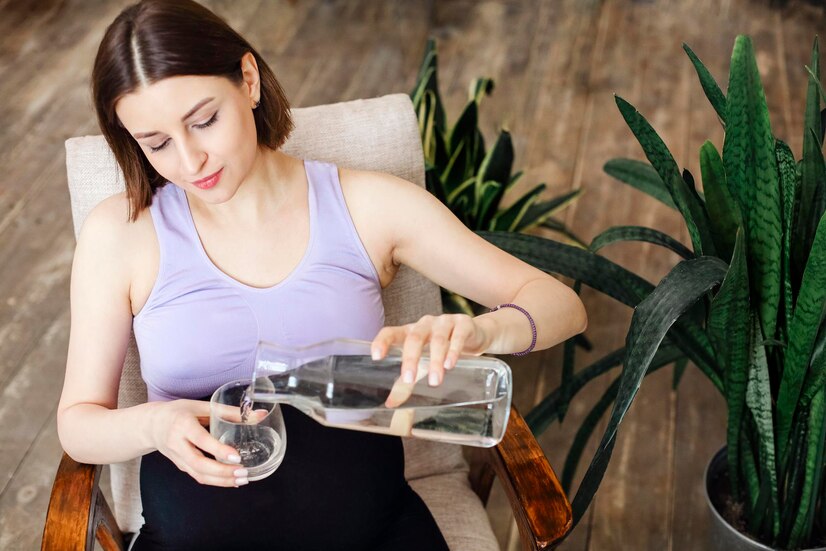Are you ready to kick that fizzy habit to the curb? If soda has been your go-to drink for years, it might be time for a refreshing change. While those bubbly pops may tantalize your taste buds, they come with a host of drawbacks that can affect your health and well-being. Transitioning from soda to water doesn’t have to feel like deprivation; in fact, it can open up a world of hydration possibilities! Let’s embark on this journey together as we explore how replacing soda with water can transform not just what you drink but also how you feel every day.
The harmful effects of soda on health
Soda may seem innocent, but it hides some serious health risks. Loaded with sugar, a single can can contain over 40 grams—often exceeding the daily recommended limit. This spike in sugar can lead to weight gain and increase the risk of obesity.
The acidity in soda isn’t just tough on your teeth; it also erodes enamel over time. Regular consumption contributes to cavities and dental issues that you might not even notice until it’s too late.
Then there’s caffeine. While it offers a temporary energy boost, excessive intake can disrupt sleep patterns and create dependency. Plus, many sodas are artificially flavored or colored with substances linked to other health concerns.
Don’t forget about artificial sweeteners often used in diet versions. Some studies suggest these could impact metabolism and gut health negatively, leaving you feeling anything but refreshed after indulging.
Benefits of drinking water
Drinking water is essential for maintaining overall health. It plays a vital role in every cellular process within the body. Staying properly hydrated can boost your energy levels, helping you feel more alert and focused throughout the day.
Water also aids digestion and supports nutrient absorption. When you’re well-hydrated, your digestive system functions efficiently, reducing discomfort and bloating.
Additionally, proper hydration can improve skin health. Drinking enough water helps maintain elasticity and keeps your skin looking fresh and radiant.
Moreover, swapping soda for water means cutting out excess sugar and calories associated with sugary beverages. This simple change can contribute to weight management or even loss over time.
By choosing water regularly, you’re not just refreshing yourself; you’re investing in long-term wellness that benefits both mind and body.
How to gradually reduce soda intake
Start by tracking your soda consumption. Note how many cans or bottles you drink in a day. This awareness is crucial for change.
Next, set realistic goals. Aim to cut back gradually rather than quitting cold turkey. For instance, if you usually have three sodas daily, reduce it to two for a week.
Replace one of those sodas with water or another beverage that excites you. Herbal teas or flavored sparkling water can be refreshing substitutes.
Consider diluting your soda with water. Mix half soda and half water at first; this lowers sugar intake while still giving you some fizz.
Keep an eye on cravings. When they strike, pause and ask yourself if you’re truly thirsty or just craving the taste of soda. Redirecting that moment can make all the difference in sticking to your goals.
Ways to make water more interesting
Bored of plain water? You’re not alone. Luckily, there are countless ways to liven it up.
Try infusing your water with fruits like citrus or berries. A few slices of lemon or a handful of strawberries can add a refreshing twist that feels indulgent yet healthy.
Herbs also work wonders. Add fresh mint leaves for a cooling effect, or basil for an unexpected flavor profile.
If you enjoy a bit of fizz, consider sparkling water. It offers the same bubbly joy as soda without the added sugar and calories.
Experiment with tea! Chilled herbal teas can be delightful and hydrating during warmer weather.
Don’t forget about flavored ice cubes—freeze bits of fruit, herbs, or even juice in ice trays to create colorful additions to your drink.
With these simple ideas, hydration becomes an exciting part of your day instead of a chore.
Healthy alternatives to soda
If you’re looking to ditch soda, there are plenty of delicious alternatives that can satisfy your cravings without the added sugar and empty calories. Sparkling water is a popular choice. It’s bubbly and refreshing, giving you that fizzy sensation without the guilt.
Herbal teas are another fantastic option. They come in various flavors and can be enjoyed hot or cold. Try brewing some hibiscus or mint tea for a unique twist.
Coconut water offers natural sweetness along with electrolytes, making it perfect after workouts. If you’re craving something fruity, consider blending fresh fruit juices with water for a light refresher.
For those who enjoy more flavor, consider unsweetened flavored waters available in stores or make your own at home by infusing regular water with citrus slices or berries. These options keep hydration enjoyable while steering clear of sugary sodas!
Tips for staying hydrated throughout the day
Staying hydrated can be simple with a few easy strategies. Start your day by drinking a glass of water first thing in the morning. This kickstarts your hydration and sets a positive tone for the day.
Keep a reusable water bottle handy wherever you go. Having it within arm’s reach serves as a constant reminder to sip throughout the day.
Set reminders on your phone or use an app that tracks your intake. Regular alerts can encourage you to drink more often, making hydration feel less like a chore.
Incorporate foods high in water content into your meals, like cucumbers, oranges, and watermelon. They not only hydrate but also add essential nutrients.
Pair every snack or meal with a glass of water. It creates good habits while ensuring you’re continuously replenishing fluids during the day.
The Dangers of Drinking Soda
Soda may seem like a refreshing choice, but it carries hidden dangers. High sugar content is one of the most alarming aspects. A single can often contains more sugar than your daily recommended intake.
This excessive sugar leads to weight gain and increases the risk of obesity-related diseases. It does not end there; soda consumption also contributes to diabetes and heart disease.
The carbonation in soda can erode tooth enamel, leading to cavities and other dental issues. The acids present create an environment for harmful bacteria that thrive in sugary conditions.
Additionally, caffeine found in many sodas can lead to dependency. This might result in headaches or fatigue when you try reducing your intake.
Artificial sweeteners used in diet sodas aren’t without risks either. They have been linked to metabolic disorders and may even trigger cravings for sweetness, perpetuating the cycle of unhealthy choices.
Benefits of Drinking Water
Drinking water offers a multitude of benefits that are often overlooked. First and foremost, it keeps you hydrated. Staying properly hydrated supports every cellular function in your body.
Water aids digestion by helping to break down food and prevent constipation. It also plays a crucial role in nutrient absorption, ensuring your body gets the vitamins and minerals it needs.
Additionally, drinking enough water can improve skin health. Hydrated skin appears more radiant and youthful, reducing the appearance of wrinkles.
Another significant benefit is weight management. Sometimes our bodies mistake thirst for hunger. By choosing water instead of soda or sugary drinks, you may consume fewer calories overall.
Adequate hydration boosts energy levels and cognitive performance. You’ll feel more alert throughout the day without those sugar crashes associated with soda consumption.
How Much Water Should You Drink Daily?
Determining how much water you should drink daily can vary based on several factors. These include age, activity level, climate, and overall health.
A common guideline is the “8×8 rule,” which suggests drinking eight 8-ounce glasses of water each day. This equals about 2 liters or half a gallon. While this is a good starting point, individual needs may differ.
Listening to your body is essential. Thirst is a natural signal that indicates when you need hydration. Additionally, pay attention to urine color; light yellow often signifies proper hydration.
Active individuals or those in hot climates may require more fluids due to increased sweat loss. Pregnant or breastfeeding women also have higher hydration needs.
Remember that all beverages contribute to your fluid intake alongside food items with high-water content like fruits and vegetables!
Infused Water Recipes
Infused water is a delightful way to elevate plain H2O into something flavorful. You can experiment with countless combinations, making hydration exciting and enjoyable.
Start with a classic: cucumber and mint. Slice fresh cucumber and add it to cold water along with a handful of mint leaves. Let it chill for an hour in the fridge for refreshing sips.
For a fruity twist, try strawberries and basil. Mash some ripe strawberries slightly before mixing them into your water jug, then toss in fresh basil for that aromatic touch.
If you prefer citrus flavors, lemon and ginger work wonders together. Thinly slice ginger root and combine it with juicy lemon slices for a zesty drink that wakes up your senses.
Don’t hesitate to mix herbs like rosemary or thyme with various fruits. Each infusion brings unique benefits while keeping you hydrated throughout the day!
Overcoming Cravings and Sticking to the Change
Cravings can be the toughest hurdle when switching from soda to water. Understanding what triggers these cravings is crucial. Stress, boredom, or just the habit of reaching for a fizzy drink can all play a role.
When you feel that urge, pause and reflect. Ask yourself if you’re truly thirsty or just craving the taste and sensation of soda. Often, drinking a glass of water first can help clarify your need.
Keep healthy snacks nearby to distract yourself. Crunchy veggies or fruits are great alternatives that satisfy your desire for something flavorful without reverting back to sugary drinks.
Another effective strategy is distraction. Engage in activities like walking or reading whenever those cravings hit.
Support from friends and family also makes a difference. Share your goals with them so they can encourage healthier habits together with you as part of this transition process!
Conclusion
Making the switch from soda to water is a choice that can significantly improve your health. By understanding the harmful effects of soda, embracing the benefits of hydration, and implementing small changes in your daily routine, you set yourself up for success. Gradually reducing your soda intake helps ease cravings while discovering new ways to enjoy water makes the transition enjoyable.
Healthy alternatives can provide variety without compromising on taste or nutrition. Keep experimenting with infused water recipes and always remember to keep hydrated throughout the day by having easy access to water wherever you are. The journey may present challenges, but each step brings you closer to a healthier lifestyle.
Choosing water over soda isn’t just about cutting calories; it’s about enhancing overall well-being and feeling vibrant every day. Your body will thank you as it adjusts to this positive change, leading to better energy levels and improved health outcomes in the long run. Embrace this shift one sip at a time!


